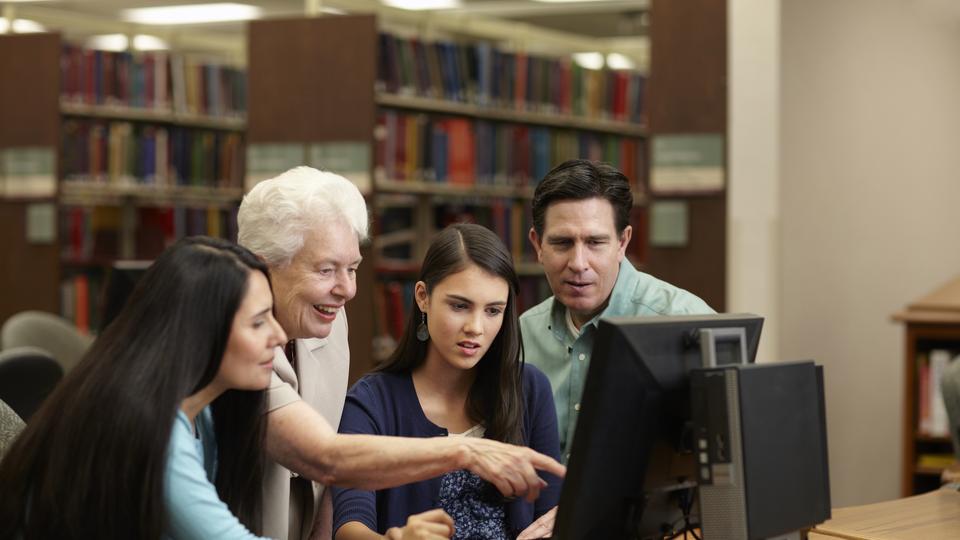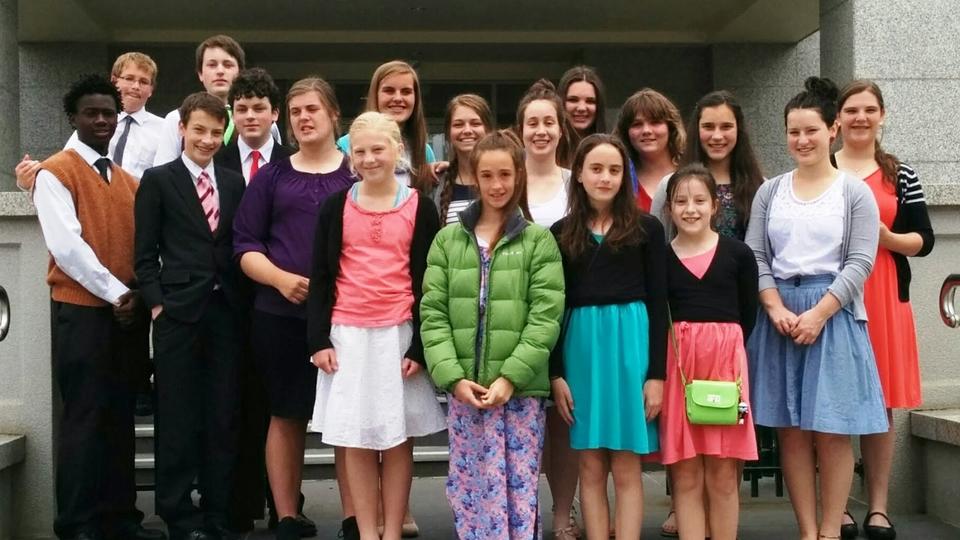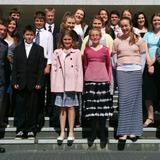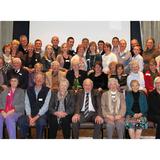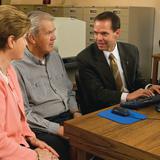“In all of us,” wrote Alex Haley, author of the popular novel Roots (based on his own family history), “there is a hunger, marrow-deep, to know our heritage — to know who we are and where we have come from.”
That “hunger” is growing throughout the world. People are discovering that to understand better who they are, they must know the stories of family members who went before them. Members of The Church of Jesus Christ of Latter-day Saints are among those who have a desire to connect in a personal way across generations by researching their family history, gathering written personal histories, preserving oral histories and recording interviews of the life experiences of elderly family members for the benefit of posterity.
| 2013 by Intellectual Reserve, Inc. All rights reserved. | 1 / 6 |
Mormons believe the family is ordained of God. They also believe the family is the fundamental unit of society and central to God’s eternal plan for His children. This belief impels older members of the Church to share the important, life-changing moments of their lives with children and grandchildren who, upon hearing and preserving these experiences, develop a stronger sense of family and belonging. With the knowledge of their forbearers’ accounts of strength over adversity, children and grandchildren become better equipped to overcome difficult challenges in their own lives.
“As we contemplate what those before us have gone through that we might be here, as we sense their faith and courage and feel their love for us and our love for them, we realise what is really important,” said former Church leader Elder John H. Groberg to a worldwide conference of Latter-day Saints in 1980. “We realise that so-called problems are only what we see when we take our eye off our eternal goal.”
Latter-day Saints focus on their family history for another reason — their belief that families can be together after this life. They research names and other information so sacred ceremonies and rites can be performed in behalf of their ancestors in Latter-day Saint temples, thereby exercising faith that they will be linked to loved ones as an eternal family.
Mormon youth worldwide are becoming more involved in seeking out personal histories and stories of their family members.
“It is no coincidence that FamilySearch and other tools have come forth at a time when young people are so familiar with a wide range of information and communication technologies,” said Elder David A. Bednar, a member of the Quorum of the Twelve Apostles, one of the senior governing bodies of the Church.
Examples of such tools are the Family Tree and Memories features recently launched by FamilySearch. The new Memories feature allows users to easily upload and manage family photos online and to tell their favourite ancestor stories. With photos, faces can be identified and linked to the respective ancestors’ profiles in a user’s family tree, ensuring they will be accessible for future generations. Photos and stories can also be seamlessly shared via Facebook, Twitter, Google+, Pinterest and email.
The presidency of the Devonport stake [diocese] in Tasmania set about bringing the spirit of family history work more fully into the stake by initiating what it calls “ward temple nights”. This was borrowing a title used by some Church units to describe their regular visits to a local temple to perform sacred ceremonies such as baptisms for ancestors who had not received the Gospel of Jesus Christ while still alive.
On these nights in the stake, ward members were invited to come to a local chapel prepared to participate in different aspects of family history work, including research, recording stories, uploading photos and indexing. The first of these “temple nights” was held in Burnie Branch in February 2014 and was attended by 30 members, each of whom left with a greater feeling of connection to their families and an increased resolve to engage in this essential element of the work of salvation.
In the middle of last year, a member of the Baulkham Hills stake in Sydney organised a reunion of 54 family members from close by and overseas, held at an RSL club in the suburb of Wakeley, named for a common ancestor of those in attendance.
During the gathering, a descendant’s chart was shown on a large screen. Using a commercial software program, it was possible to zoom into various names in the family tree, and photos and records associated with each person, while various members of the family presented stories about individual ancestors.
Individual photos were taken of each person in attendance at the “Wakeley Clan Gathering” so that each member of the family could receive their own personalised version of the descendant’s chart with their own photo and those of other living members. In this way, the value of ‘family’, both distant and close, would be reinforced. Naturally, family members were given the option to participate or not, but all elected to join in.
